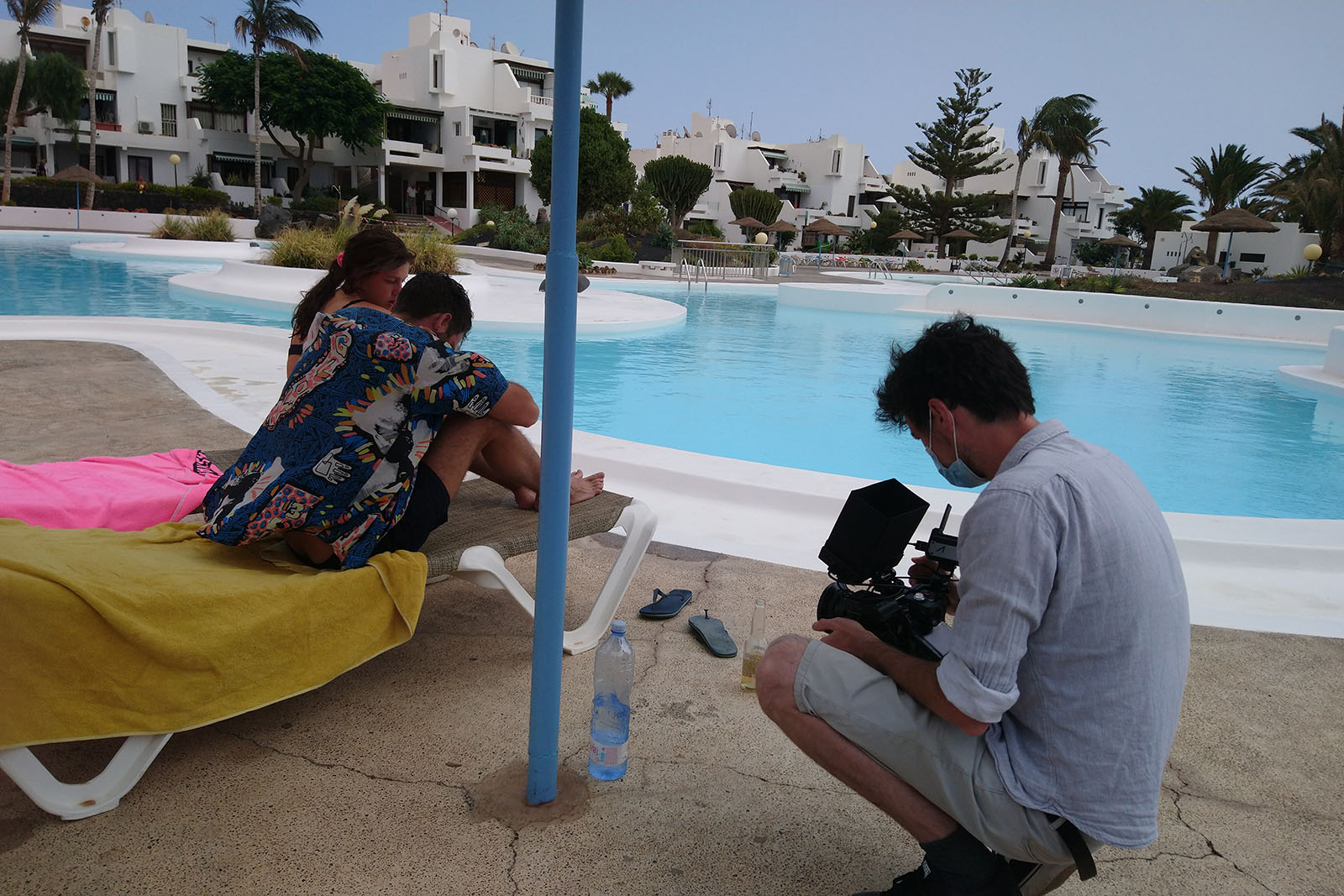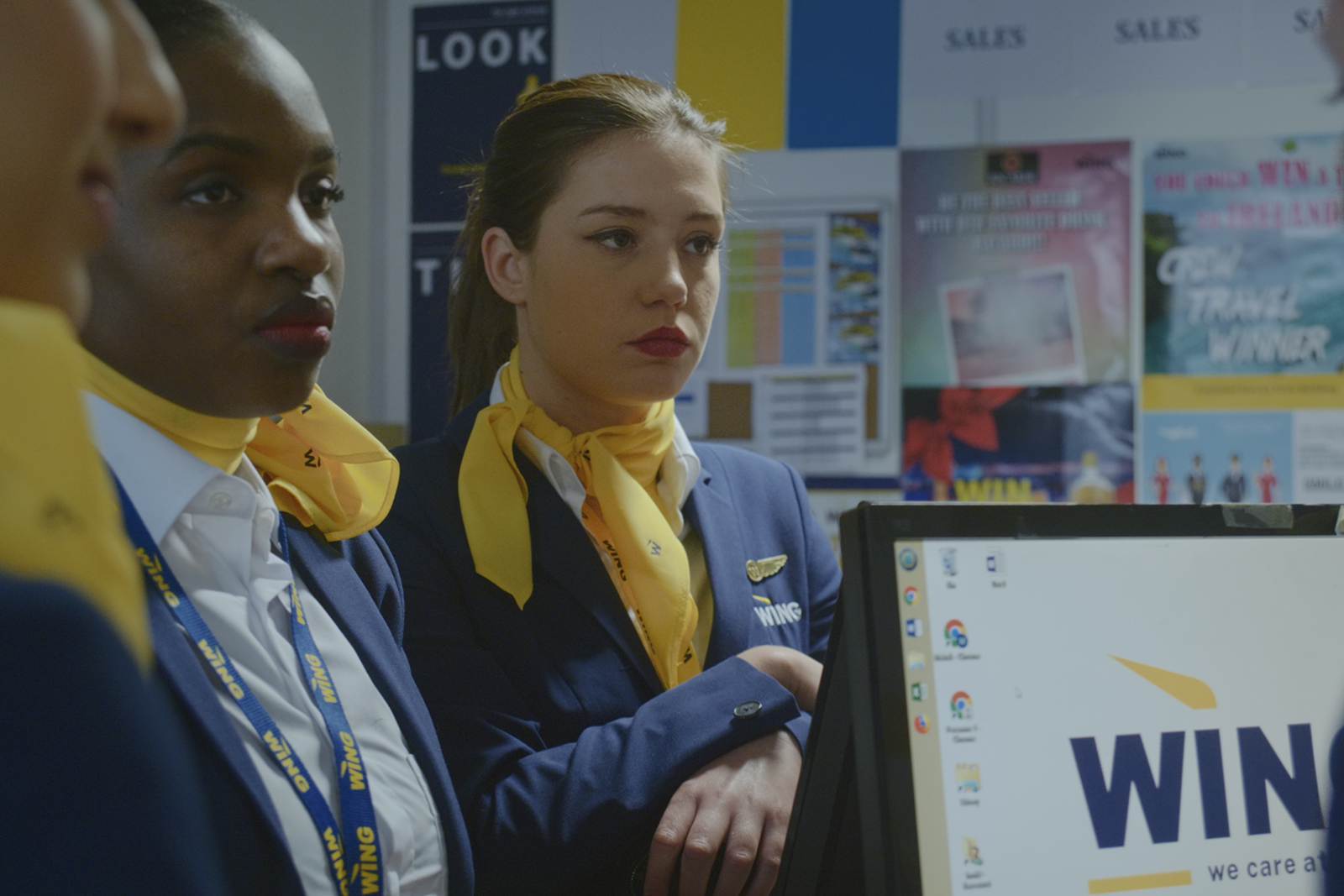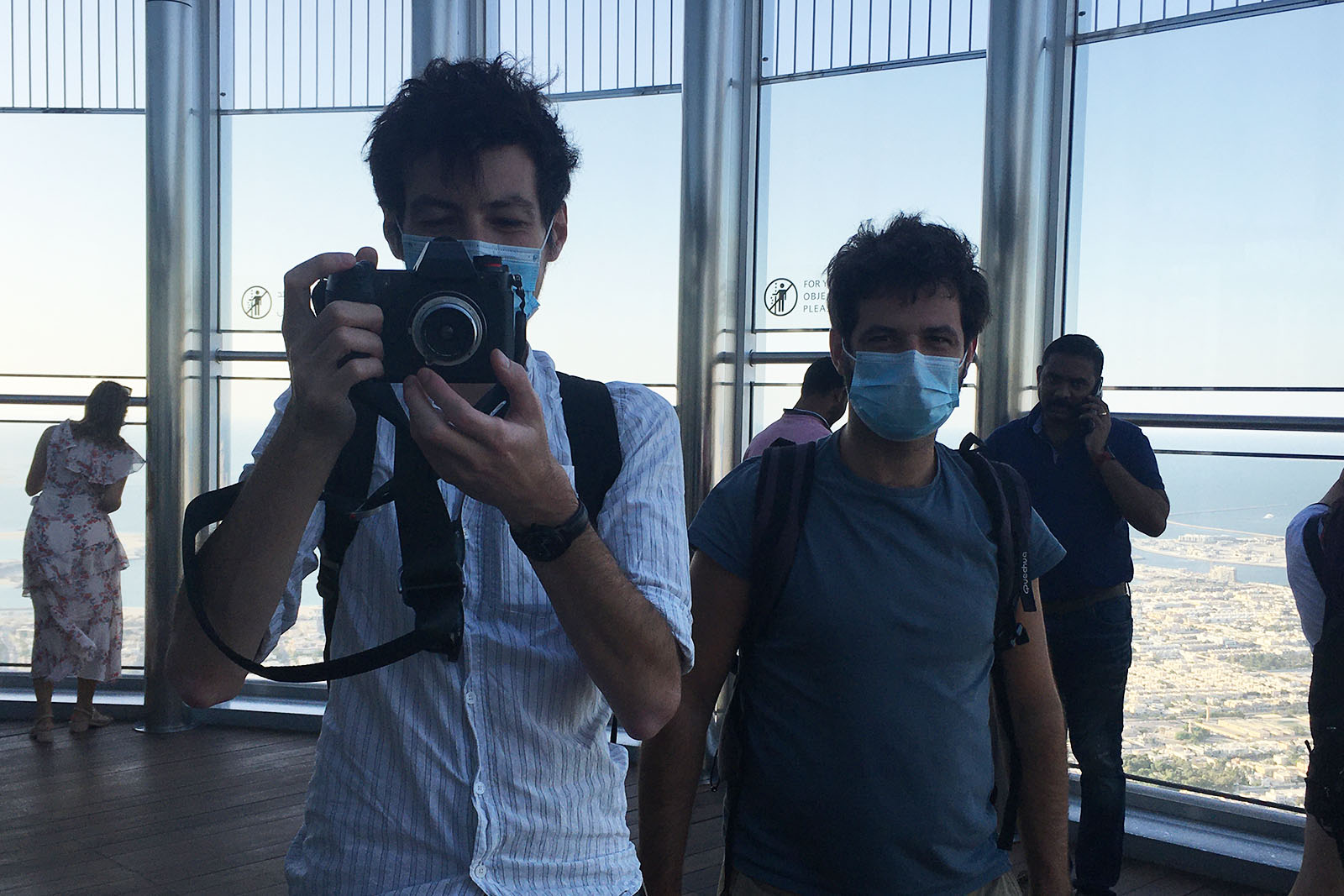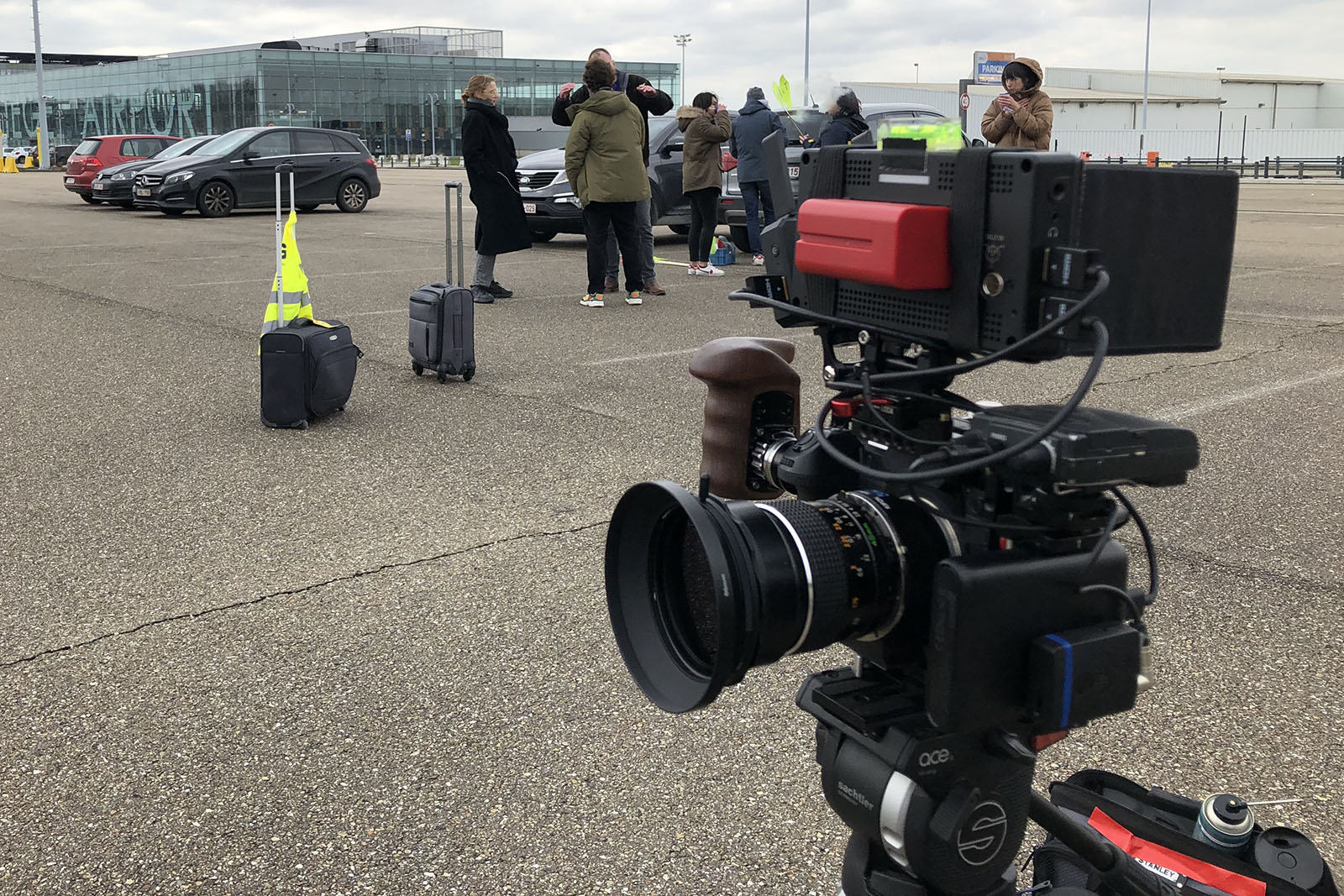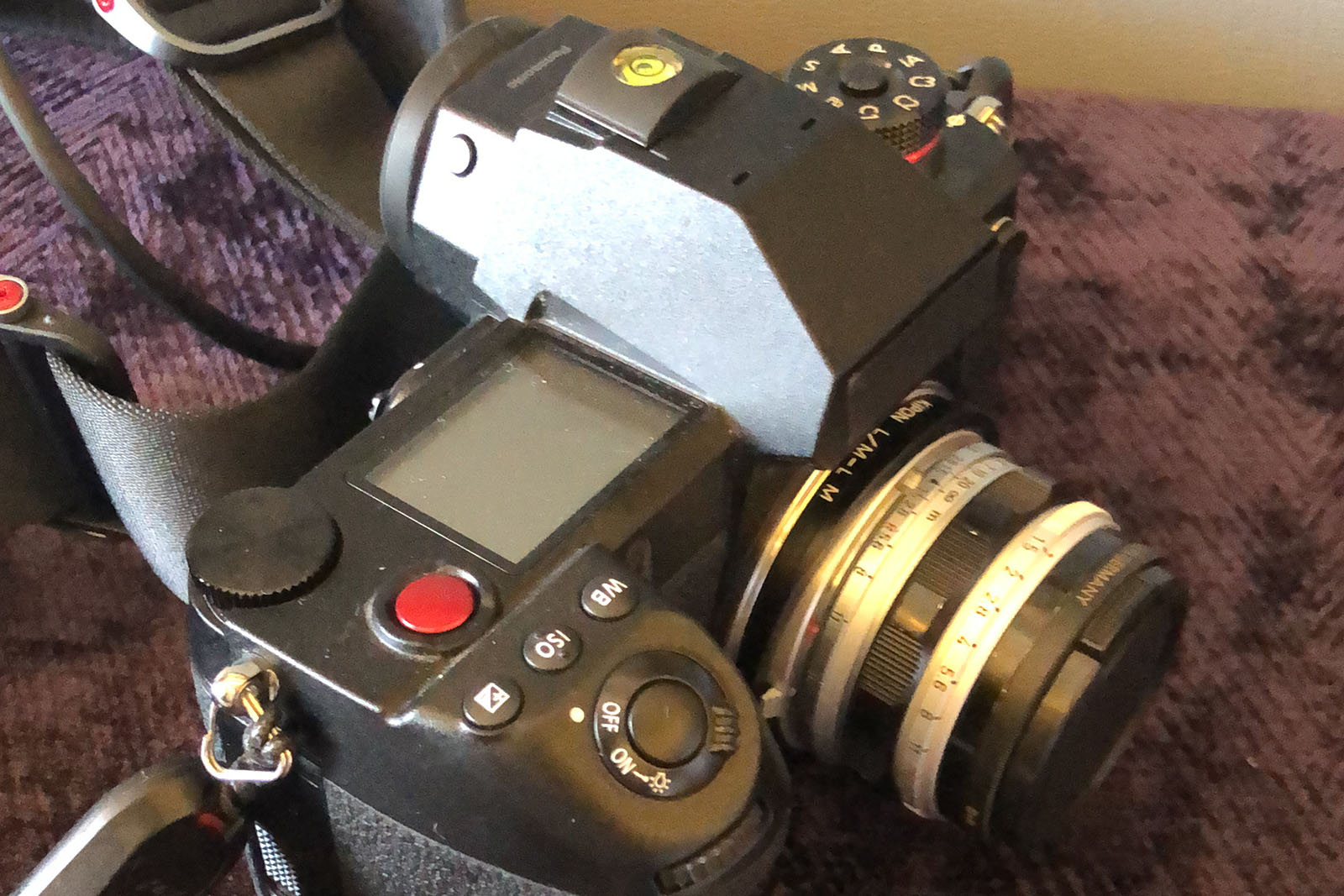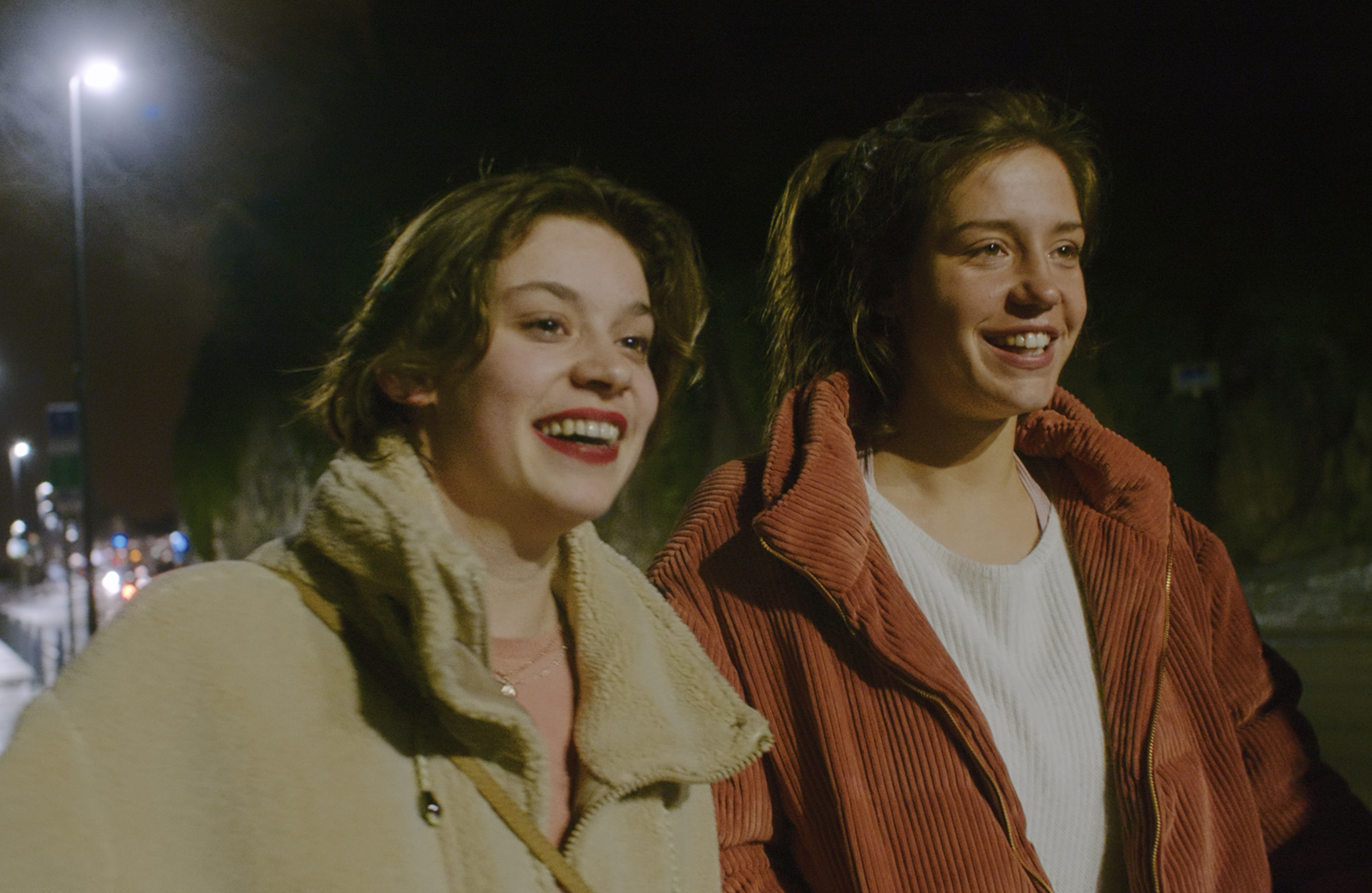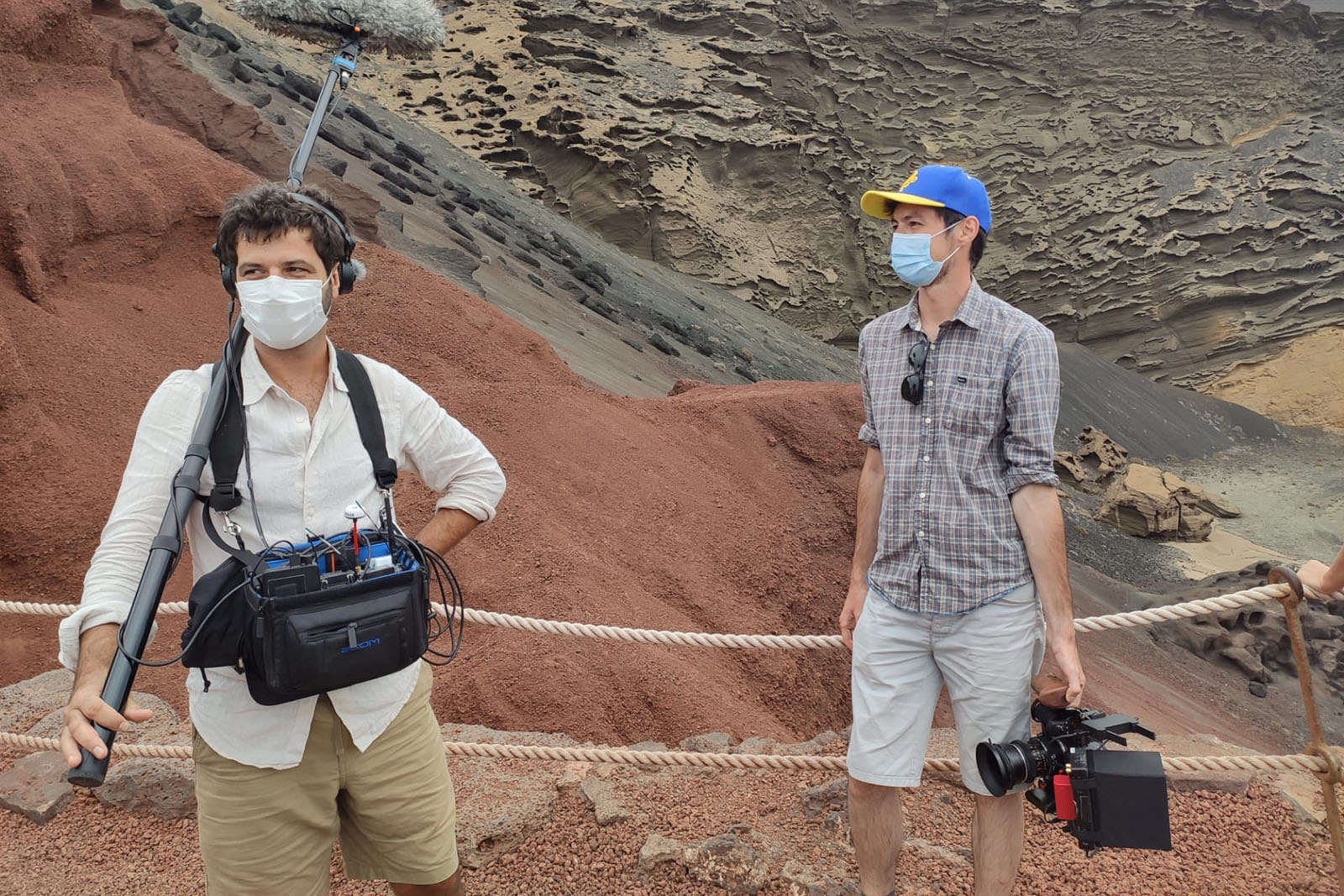S1H: Going Beyond Full-Frame
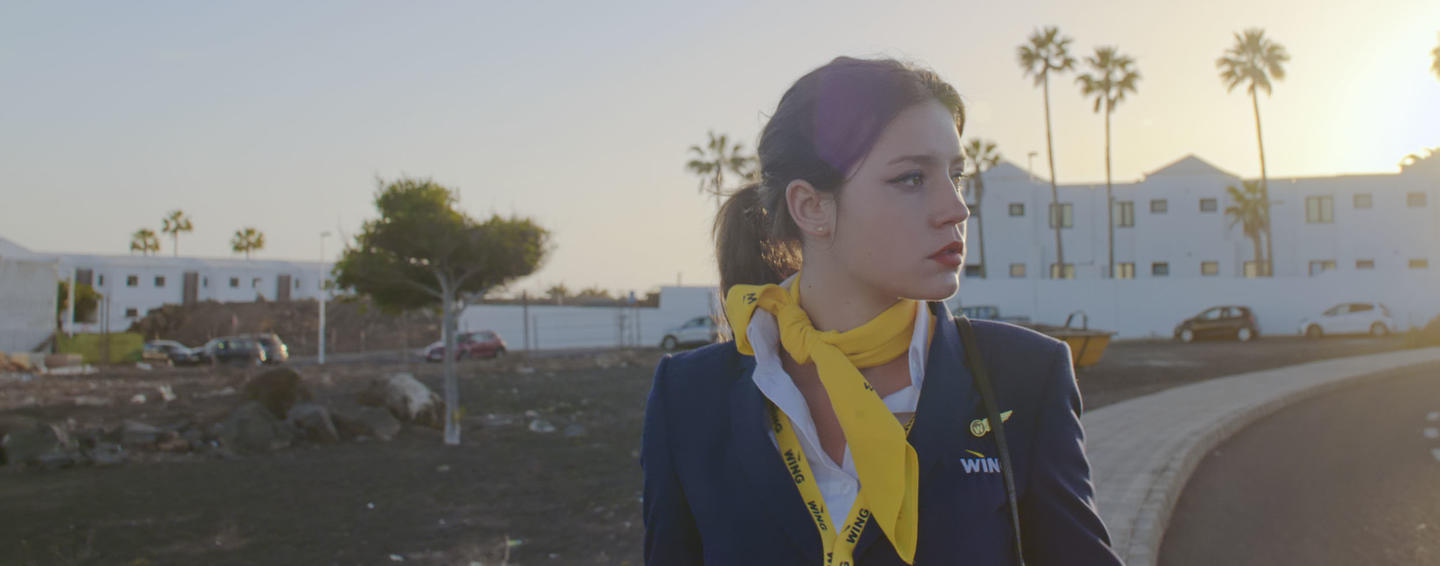
S1H: Going Beyond Full-Frame
DP Olivier Boonjing shoots 2021 Cannes Film Festival award-winning feature "Zero F**ks Given" with LUMIX S1H cameras and medium format lenses
In Rien à foutre (Zero F**ks Given), Cassandra (Adèle Exarchopoulos) is a flight attendant for a low-budget airline. She’s a hard worker and capable at her job, but when she’s suddenly dismissed, she must deal with baggage from her past.
Directed by Julie Lecoustre & Emmanuel Marre, Zero F**ks Given recently had its premiere during International Critics’ Week at the 74th Cannes Film Festival. The feature film was shot by Olivier Boonjing (Parasol, Lola, The Break) with two Panasonic LUMIX S1H cameras.
Growing up in Belgium near the German and Dutch border, Boonjing took up still photography at a young age and began watching movies on his DVD player as a teenager. When he arrived in Brussels for university, he met many peers who were entering film school and began experimenting with digital camcorders.
One of his early filmmaking inspirations was the films of Wong Kar-wai (In the Mood for Love, Fallen Angels). “I could feel while watching his movies that his approach was very different,” revealed Boonjing. “He spent most of his early films shooting in the same neighborhood of Hong Kong – just a camera and his actors. I’ve always had a special place in my heart for small films that show you could make a movie yourself if you wanted to.”
Boonjing had previously worked with Marre on a short film that they shot with a documentary approach where Boonjing handled both camera and sound. “It was one camera, one lens, two lavalieres, and that was it,” he explained. “I think we both appreciated the experience, so early on, Emmanuel spoke to me about his first feature film that he would direct with a very light/documentary approach.”
Boonjing, shooting handheld, rated the S1H at 1250 ISO for daytime scenes so he could slightly underexpose to better maintain highlight detail
Developing the look
Before the script was written, they began prepping the film, discussing the look and style, and exchanging images in a look book. Marre, Lecoustre and Boonjing leaned more towards photography references over film references. One of their biggest inspirations was Magnum photographer Harry Gruyaert, whose book, Last Call, is a vision of the world’s airports. The trio also looked at the work of British photographer Martin Parr, who uses vivid color in his observational photography. According to Boonjing, the two photographers gave them a contrast between Cassandra’s work environment and the environment where she lived.
“It's more like a portrait film,” described Boonjing. “At the same time, it’s also a portrait of a system that we all see and are sometimes a part of. We all enjoy things like cheap flights, but sometimes we don’t think about the people working in this system. It’s a study of our modern society through this portrait.”
When Marre brought Boonjing the script, he revealed that it might not be what they would shoot. Marre was precise in his goal for improvisation, not only for his actors, but also for the production team. Boonjing would be working alone for the first half of the movie and would be joined by one assistant for the second half. For many sequences, they would shoot without a permit, so Boonjing needed a small unobtrusive camera, but good enough to be able to shoot an entire feature film.
During pre-production, Boonjing tested several different cameras including an iPhone, a 16mm film camera, and lightweight digital cameras like the Kinefinity Mavo LF and Sony A7S. “With the iPhone, even if you don't really like the look, it would be useful for sequences where even a photo camera couldn't work,” said Boonjing. “In the end, we felt a photo camera body was the best solution.”
Before testing the camera, Boonjing had seen early tests from LUMIX S1H, so he pre-ordered it because no rental houses were currently carrying it. When it arrived, they shot a quick test and were impressed with the results. “We bought a second one, so we could have one handheld and one on a gimbal,” revealed Boonjing. “And then we basically brought the S1H to all of our locations scouts. To be able to do location scouts all around Europe with the actual camera that was going to be used for the shoot was a huge benefit. This is something that I think is a bit unique, and I know I'm going to miss it on the next project because it was so simple.”
Testing the S1H
Boonjing’ first test with the S1H was dynamic range. With limited or no crew, he knew he would have no control over his environment. He was also working in very high contrast ratios inside airports with large windows. “Working with other DSLRs and small mirrorless cameras, I was used to having blown out windows,” said Boonjing. “Literally the first time I turned the S1H on, I was alone in my apartment, and I was completely blown away. I’m doing side-by-sides with a Sony Venice on a current project, and the image quality is so close it’s nearly frightening considering the price and size difference.
“I also tested the S1H’s sensitivity in low light and I was amazed because so many cameras are advertised for their high ISOs,” continued Boonjing. “People do not consider enough on how the image looks at 20,000 or 50,000 ISO. With the S1H, the noise is still there, but it’s a nicer noise. The S1H has a good look well beyond 4000 ISO.”
The third thing that sold him on the S1H was that he knew he would have to be discreet while shooting handheld on location. “I’ve tested sensor stabilization on many cameras and the S1H was just fabulous,” revealed Boonjing. “Basically, the whole film was shot without any camera rigs – no shoulder rigs or Easyrigs – just a camera with a side handle. We shot in bars where we had permission, but the people there thought I was the videographer of the party. They didn’t consider that I was shooting a feature film since I had such a small camera in my hand with a very small lens.
“One thing professional cinematographers tend to forget is that there is no cinema camera with in-body sensor stabilization,” continued Boonjing. “That's why you see many big rigs used on films – just to stabilize the camera.”
Using medium format and vintage lenses
Perhaps most interesting about Boonjing working with the S1H was his choice of lenses. His main lenses were Mamiya Sekor C lenses, which are the first generation of Mamiya 645 medium format lenses. To mount the lenses, he employed a Kipon Baveyes 0.7x lens mount adapter for Mamiya 645-mount lens to L-Mount so he could project most of the lens coverage on the S1H’s full frame sensor. His main lens was a 45mm f/2.8 but he also used a 35mm f/3.5 and 70mm f/2.8.
“I think the lenses have a special way of rendering skin and colors,” revealed Boonjing. “In the end, we had a sensor size that was close to an ALEXA 65, which is much bigger than even full-frame,” continued Boonjing. “Emmanuel and Julie really wanted to shoot most of the film on one lens with one wider and one longer for different cases. With the speed booster, the 45mm would be the equivalent in field of view to a 31.5mm for full frame and if you look at Super 35, it becomes a very wide lens. The idea of adapting any kind of lens was something I always dreamed of when we had these small cameras with mirrors. I still can’t believe you can have a medium format video camera that fits in half of a backpack. It’s completely amazing.”
Creating shallower depth of field was not Boonjing’s primary focus in shooting with the medium format lenses. For close-ups, Boonjing stopped down on his lenses and often shot at an f/8 or even f/11, and never less than an f/4. “What I was most interested in was to use the Mamiya lenses on the sensor size they were built for,” explained Boonjing. “You can use the edges of the lens and suddenly have the right perspective that Mamiya intended when they built their lenses.”
Boonjing also used Canon FD and LTM (Leica Thread Mount) vintage lenses. He typically shot with the Canon lenses when he wanted to keep straight lines. “With the Mamiyas, when you’re shooting architecture, they sometimes will deform,” he explained. “Sometimes it’s interesting but sometimes it’s too much. We needed a better close-up lens because when working with the Mamiyas, you’re further away.”
The Canon LTM lenses are in demand lately due to director Zack Snyder using a re-housed Canon 50mm f/0.95 LTM lens to shoot Netflix feature, Army of the Dead. Boonjing used the LTM lenses because of the nice vintage look they produced without adding high contrast. “The S1H is not a big camera,” he said, “so I wanted to put small lenses on it so it wouldn’t look like a big object. Shooting in public, I think people notice you when you use big lenses.”
Even smaller than the S1H, directors Lecoustre and Marre both had iPhones that they would use on location scouts, or for small pick-up shots like through the window of a plane. “It was basically used like a point and shoot sketchbook tool,” said Boonjing. “We told ourselves in prep that it was similar approach to photo books in which a photographer would mix picture formats – using a medium format photo with a 24-by-36 film camera and also pictures captured with a point-and-shoot camera.”
Working with the S1H
Boonjing captured UHD (3840x2160), 10-bit, 422, ALL-I, 24p files. He recorded UHD because he framed in the 1.6:1 aspect ratio, so he didn’t need the wider 17:9. He also recorded in V-Log and created a viewing LUT that produced a clean and filmic look. “We didn’t want the movie to look dated since it’s a contemporary story,” said Boonjing. “There was a thin line between making something look filmic without any nostalgia.”
He rated the S1H at 1250 ISO for daytime scenes so he could slightly underexpose to better maintain highlight detail. For night scenes and dark day interiors, he primarily shot at 4000. “In some sequences, I even shot at 50,000 ISO,” revealed Boonjing. “I was in the back of a car and the actor next to me was lit by the light bouncing off the street from other cars passing by, which was next to nothing. It’s quite fruitful for me to be able to offer this to the directors – the simple idea that if you can see it with your own eyes, we can film it. That's something completely new.”
To monitor footage, Boonjing used an Accsoon CineEye Video transmitter. According to Boonjing, the transmitter is smaller than a pack of cigarettes and they were able to send a signal to iPhones, or iPads, that the directors already had. For audio, Boonjing had a Tentacle Sync so he could sync the sound recorder based off the time code. One the other channel, he had a Sennheiser G2 wireless receiver so he could place a reference track on the video files in case they wanted to watch the sequence in the evening without post synchronization.
A photographer's filmmaking approach
Boonjing’s lighting package was minimal – just black and white cloth to bounce or block light. He also had three small RGB LED lights, which he used only three or four times. Instead of lighting and grip set-ups, the team typically chose locations based on the ambient light while shooting at optimal times. “We also used LowCon and Glimmerglass filters to make certain windows bloom more, or when we were using practical lamps. All what you're going to see in the film is 99.9% natural light.
“We wanted more of a photographic approach than a cinematic approach since a photographer wouldn't do much except shoot at a wider angle,” he continued. “We also wanted to give the actors more freedom. Our approach was to work more on the framing rather than the lighting.”
The film was edited by Nicolas Rumpl in Adobe Premiere Pro. For the color grade, Boonjing spent one month at home working on the color and then worked with colorist Loup Brenta for one week before moving to Cobalt Films to work in a DaVinci Resolve suite.
At Cannes, Zero F**ks Given won the Gan Foundation Award for Distribution and according to Boonjing, the award will help in finding distribution for the film. “The response from the [Cannes] audience was good, and I have a feeling the movie will be pushed forward in France and Belgium,” said Boonjing. “Hopefully, we'll have an international release because I think it’s a good fit since much of the film is in English.”
Overall, Boonjing is quite happy about the look of the film. “I really have no preferences in terms of camera brands,” revealed Boonjing, “but the S1H is a huge step forward. When I speak to friends who are professional cinematographers, they consider what I did on this film to be original and new. But when you spend time watching people create content for YouTube, what I did is nothing special. It's just a backpack with a mirrorless camera, and then you go out and shoot something.”
For more information about cinematographer Olivier Boonjing, visit his website.
